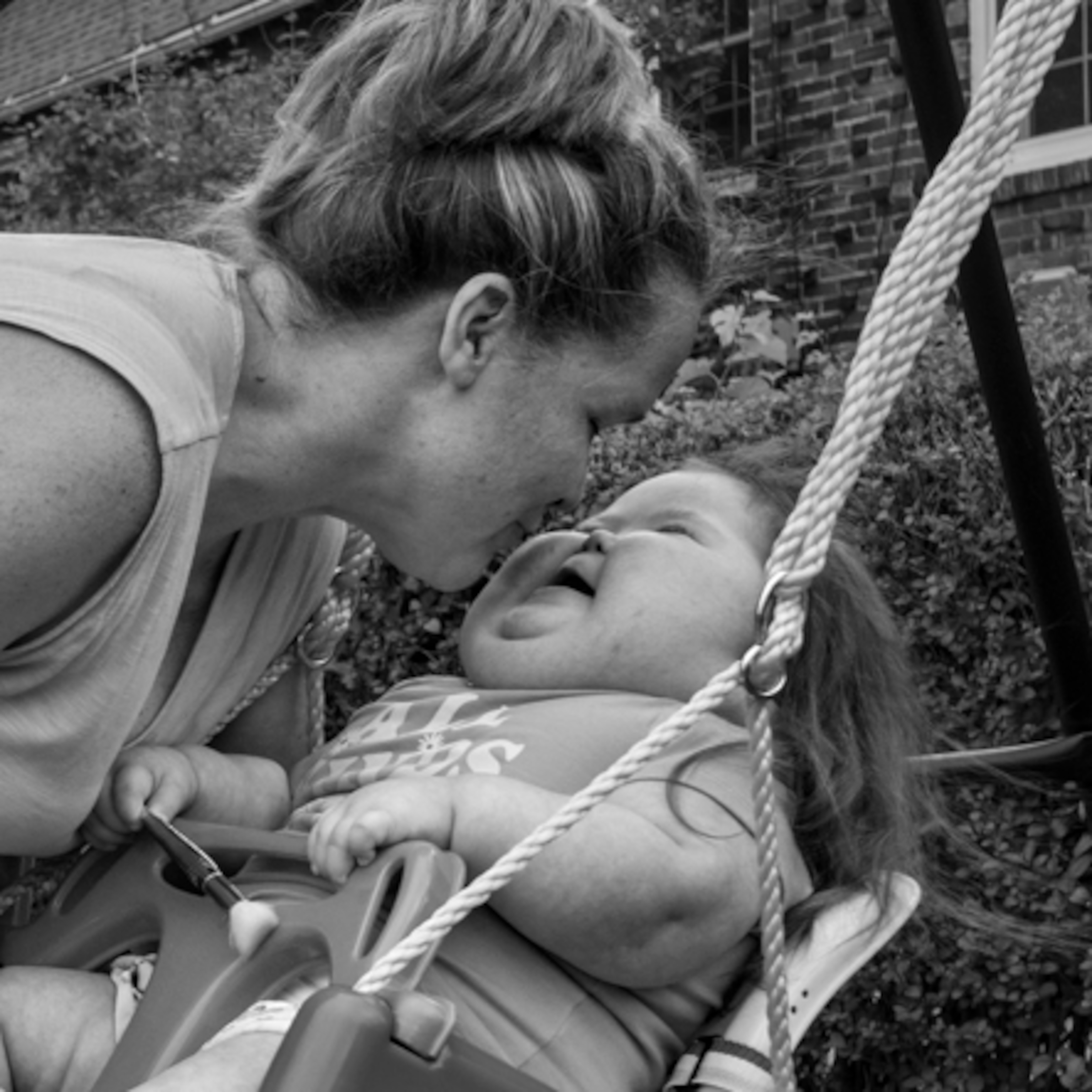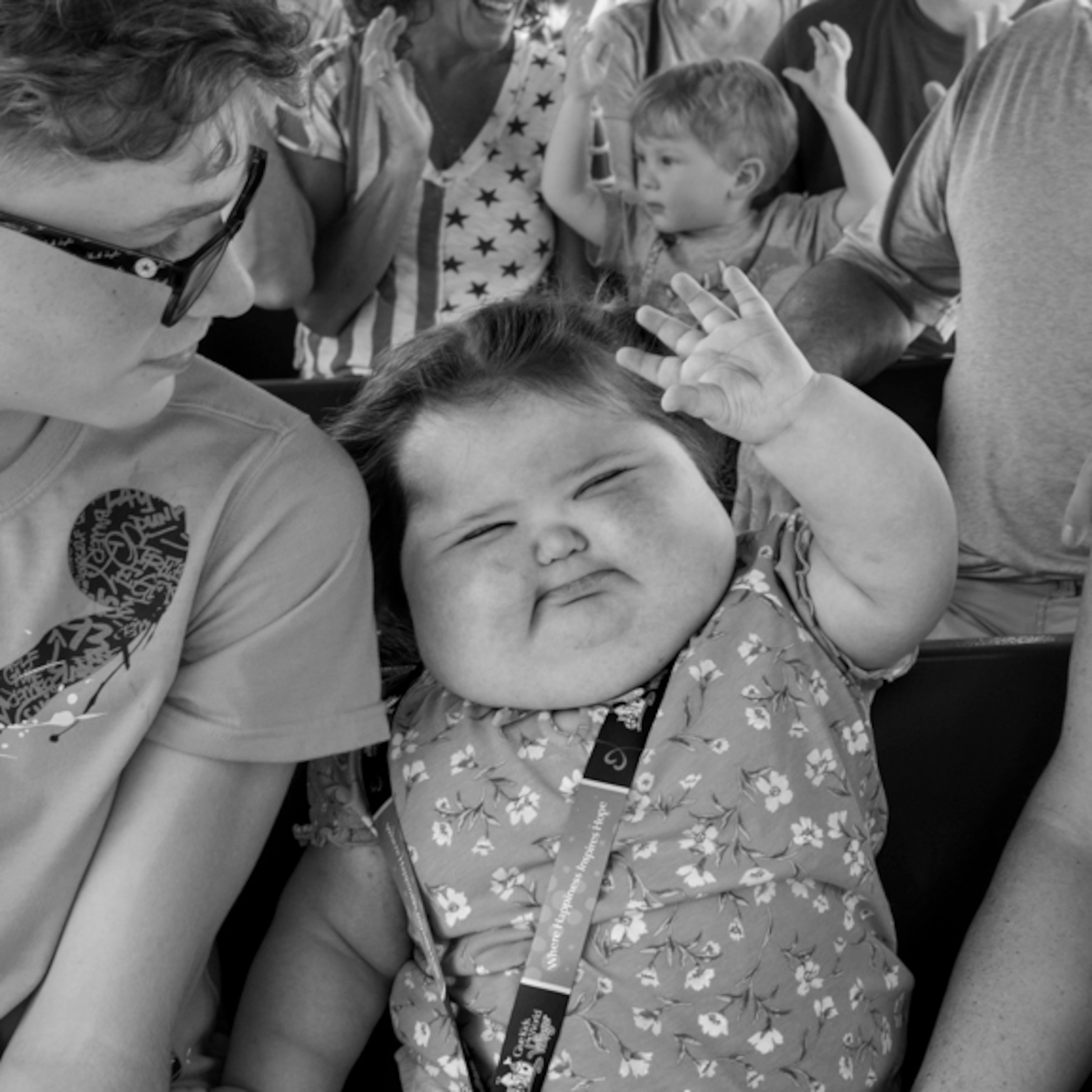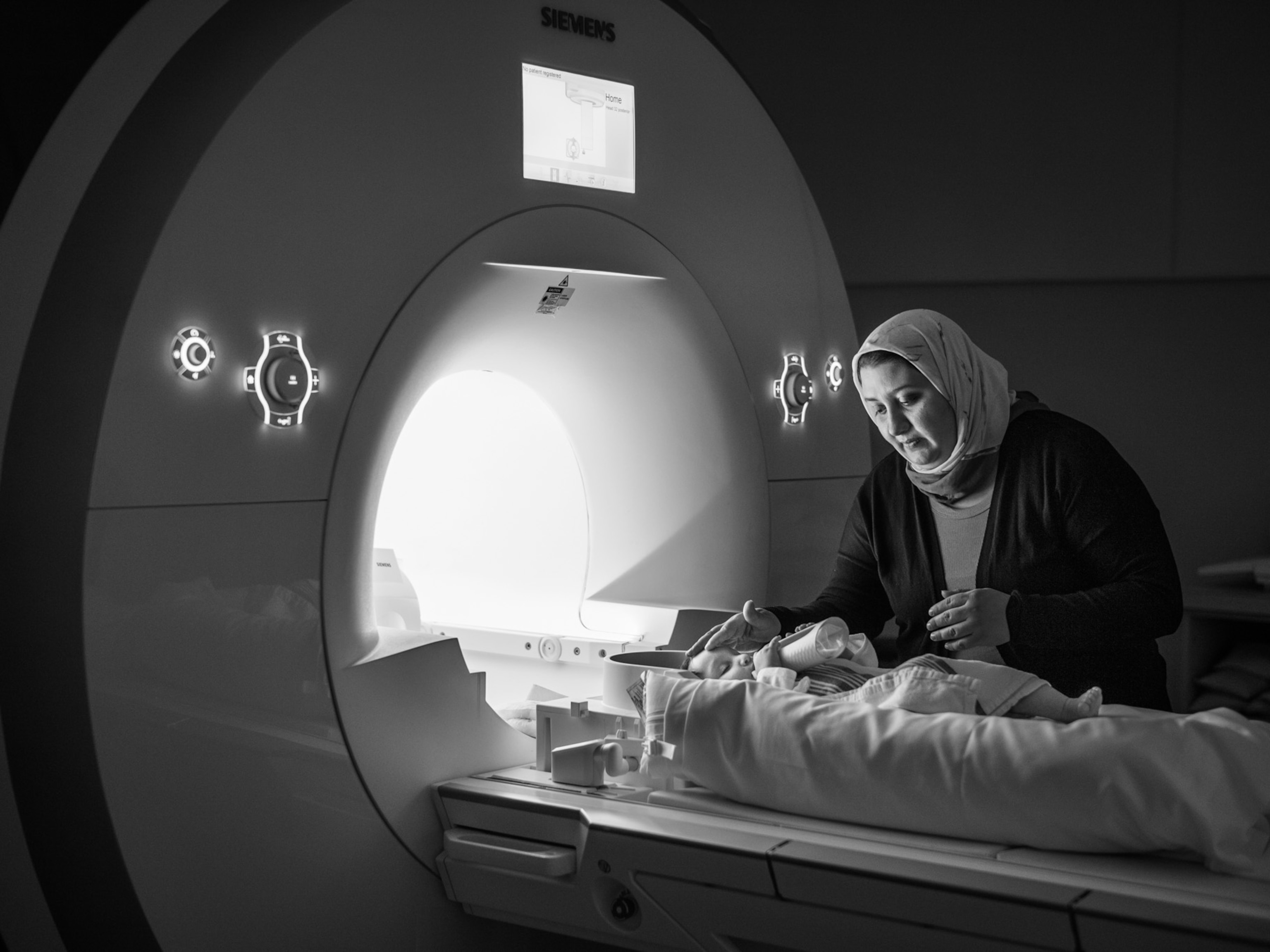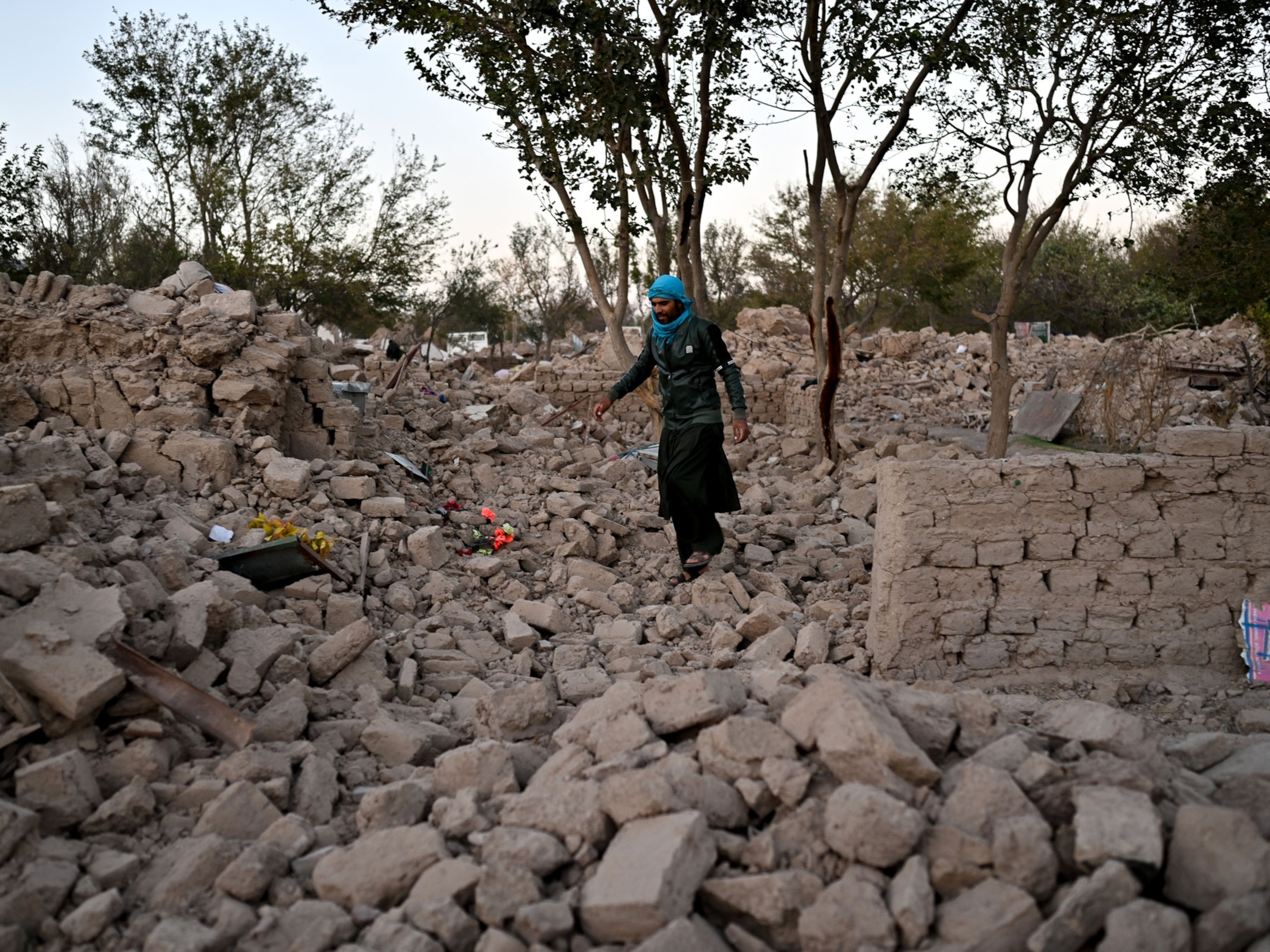
Tragedy in an Instant, Photographed for a Lifetime
“I will continue to photograph, film, and document major points in Saleh’s life for as long as he continues to welcome me into his world. Our lives have woven together, and Saleh’s indomitable spirit continues to inspire me every day.”—Deanne Fitzmaurice
On November 11, 2003, when I was a staff photographer for the San Francisco Chronicle, I was assigned a quick story on a young Iraqi boy who had been flown to Oakland Children’s Hospital, now called UCSF Benioff Children’s Hospital Oakland, for emergency treatment.

A little over a month earlier, in a small village outside Nasiriyah in southeastern Iraq, nine-year-old Saleh was walking home from school with his big brother Dia when he picked up what he thought was a ball. It exploded. Dia was killed instantly; Saleh lost his right hand, an eye, fingers, and the bomb ripped a massive hole in his abdomen.
At the local hospital, the doctors told his father, Raheem, that the only hope for his son’s survival was the Americans.

After keeping vigil beside the critically ill boy for 20 days, the American surgeon treating him at Tallil Air Base in Iraq arranged through a colleague at Oakland Children’s Hospital to have him flown with injured American soldiers to California. Raheem accompanied his son.
I was shocked when I walked into the room. The 40-pound child looked so fragile lying in the hospital bed, tethered to a mass of tubes and with another poking from his abdomen and a patch covering his missing eye. The stump of his right arm and his left hand were bandaged. He was semiconscious.
Raheem stood beside him, looking helpless. He spoke no English.

I shot a few frames, then stepped into the hallway. It was horrific what that bomb had done to the boy. I collected myself, then headed back to the office to make my deadline.
But I couldn’t shake what I’d seen. We were then six months into the Iraq war, but we were not seeing this in the news—the collateral damage. I wanted to humanize the war, to show what it had done to this innocent young boy and his family. I convinced my editors to let me follow Saleh’s recovery until he and his dad flew home to Iraq. Little did I know this would evolve into a 12-year project.


To gain Raheem’s permission, I explained through an interpreter why it was important to tell their story: that Americans needed to see the human impact of this war. He agreed, but I still needed to gain their trust. I wanted to produce an intimate story about this Iraqi child, this family whose life was blown apart.
On December 23, 2003, Saleh was released from the hospital after several dozen surgeries to heal his shattered body—and Raheem received devastating news. Insurgents had ransacked their home and posted “wanted” posters of him around the village. They thought he was an American spy: Why else would his son be getting medical treatment in America? He realized they would never be able to return to their homeland.

I continued to photograph. Raheem and Saleh received political asylum. Then petitioned for his wife, Hadia, and the rest of the family to join them. In December 2004, I traveled to the border of Iraq and Jordan to photograph the family’s journey to America.
In 2005, the photos chronicling Saleh’s journey won the Pulitzer Prize. But I was compelled to continue. I had seen how this story affected people, and I had developed an affection for him. I didn’t want people to forget his story.

Over the next years, I would text Saleh every few months to check in and see what was happening in his life. I photographed the family several times a year as they adjusted to their new life. They never spoke a bad word about America or what had happened; they only expressed gratitude.
I tried to be there with the family on ordinary days and on momentous occasions, and Saleh and his family grew accustomed to me being there with my camera. They graciously allowed me to witness and document their journey. I followed Saleh as he underwent additional surgeries, including brain surgery to remove shrapnel. I documented doctors who tried to fit him with heavy, clawlike prosthetics that he didn’t use. I followed him as he found ways to work on a laptop, play video games, and hold a fork using the stump of his right hand with the thumb on his left hand—and as his family helped him with tasks like tying his shoes.


Saleh grew to over six feet tall and walked around Oakland International High School wearing sunglasses in lieu of an eye patch and long-sleeve shirts that covered where his hands would be. I was privileged to record the moment when Saleh walked across the auditorium stage to accept his diploma.
In the spring of 2015, I took Saleh to lunch, and he sat looking at the burger that he could not pick up. I helped him while other kids stared at him. In the car, he said, “You know, I think I’m ready for prostheses.” I knew his family didn’t have the resources.


That summer, I told a friend of mine who worked at UCSF Medical Center that after 12 years of getting by without them, Saleh wanted hands. She told the head of the prosthetics department about him, and he wanted to help.
In December, I was with Saleh as he walked into an exam room and tried on his new hand, which had been sized, molded, and matched to his skin tone. He beamed with joy as he looked at it. His father, Raheem, walked up to him and they shook hands, something he had wanted to do for a very long time.
Deanne Fitzmaurice’s photo essay about Saleh won the Pulitzer Prize for Feature Photography in 2005. She will be answering questions about this story on the National Geographic magazine Facebook page on February 12 at 2 p.m. EDT. Tune in and join the conversation!
You can view more of Saleh’s story on Fitzmaurice’s website. You can also follow Deanne on Instagram @deannefitzmaurice.
You May Also Like
Go Further
Animals
- Soy, skim … spider. Are any of these technically milk?Soy, skim … spider. Are any of these technically milk?
- This pristine piece of the Amazon shows nature’s resilienceThis pristine piece of the Amazon shows nature’s resilience
- Octopuses have a lot of secrets. Can you guess 8 of them?
- Animals
- Feature
Octopuses have a lot of secrets. Can you guess 8 of them?
Environment
- This pristine piece of the Amazon shows nature’s resilienceThis pristine piece of the Amazon shows nature’s resilience
- Listen to 30 years of climate change transformed into haunting musicListen to 30 years of climate change transformed into haunting music
- This ancient society tried to stop El Niño—with child sacrificeThis ancient society tried to stop El Niño—with child sacrifice
- U.S. plans to clean its drinking water. What does that mean?U.S. plans to clean its drinking water. What does that mean?
History & Culture
- Gambling is everywhere now. When is that a problem?Gambling is everywhere now. When is that a problem?
- Beauty is pain—at least it was in 17th-century SpainBeauty is pain—at least it was in 17th-century Spain
- The real spies who inspired ‘The Ministry of Ungentlemanly Warfare’The real spies who inspired ‘The Ministry of Ungentlemanly Warfare’
- Heard of Zoroastrianism? The religion still has fervent followersHeard of Zoroastrianism? The religion still has fervent followers
- Strange clues in a Maya temple reveal a fiery political dramaStrange clues in a Maya temple reveal a fiery political drama
Science
- NASA has a plan to clean up space junk—but is going green enough?NASA has a plan to clean up space junk—but is going green enough?
- Soy, skim … spider. Are any of these technically milk?Soy, skim … spider. Are any of these technically milk?
- Can aspirin help protect against colorectal cancers?Can aspirin help protect against colorectal cancers?
- The unexpected health benefits of Ozempic and MounjaroThe unexpected health benefits of Ozempic and Mounjaro
- Do you have an inner monologue? Here’s what it reveals about you.Do you have an inner monologue? Here’s what it reveals about you.
Travel
- Follow in the footsteps of Robin Hood in Sherwood ForestFollow in the footsteps of Robin Hood in Sherwood Forest
- This chef is taking Indian cuisine in a bold new directionThis chef is taking Indian cuisine in a bold new direction
- On the path of Latin America's greatest wildlife migrationOn the path of Latin America's greatest wildlife migration
- Everything you need to know about Everglades National ParkEverything you need to know about Everglades National Park







